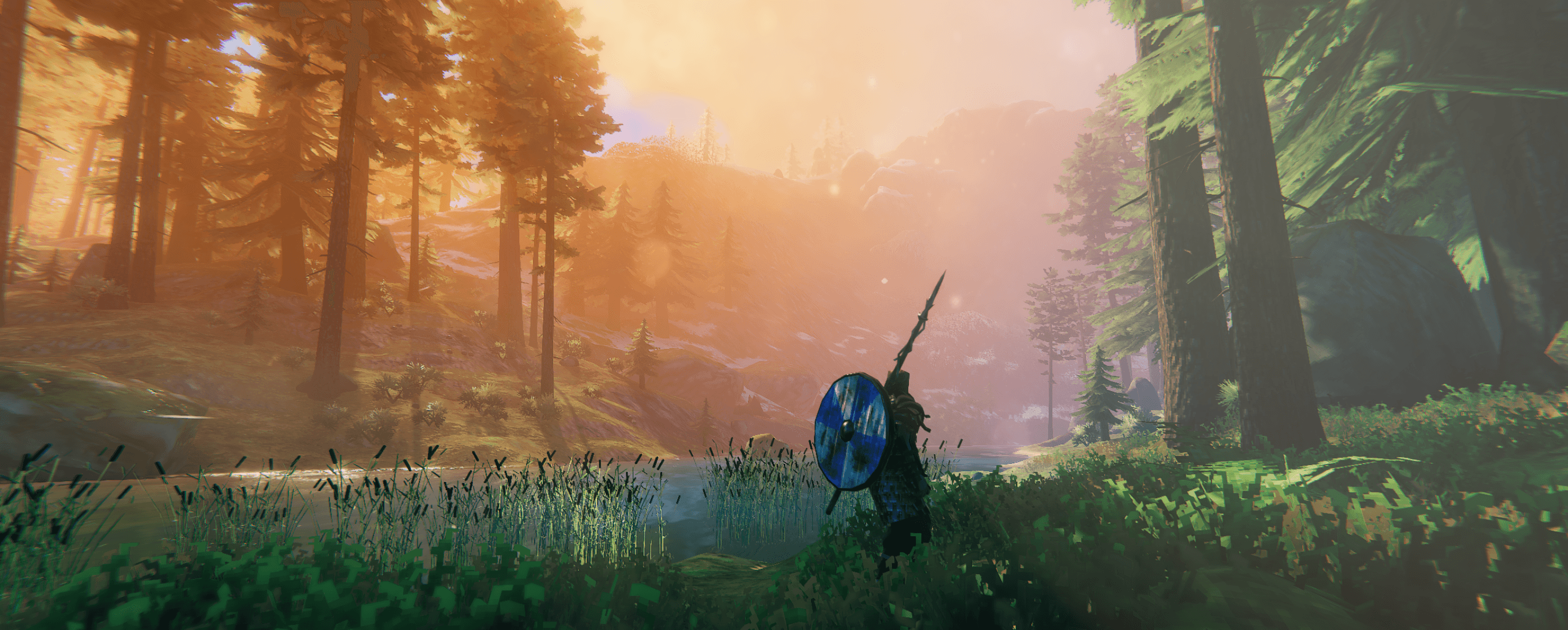
 Christopher R. RiceJun 29, 2023
Christopher R. RiceJun 29, 2023Valheim is one of those games where the simple can be elusive while the difficult can seem obvious. In other words, things can be annoyingly complicated even when it’s simple. In playing it, though, I’ve found that there are a few things you can do to make this work for you.
Food Best Practices
Valheim is a survival game (with all that that entails) that puts a significant emphasis on its food and cooking system. You'll need to pay attention to your Viking's diet to ensure they're getting a balanced mix of nutrients, which can drastically affect your performance. Here are some best practices when it comes to food:
Variety is Key: One of the key mechanics of Valheim's food system is that you cannot stack the same food type. This encourages players to maintain a varied diet. Your character can eat up to three different types of food at once, and each food item replenishes both health and stamina, but in varying amounts. So it's wise to keep an assortment of foods on hand.
Balance Your Diet: Because each food item impacts health and stamina differently, try to adjust your diet to suit your current needs. If you're going to be fighting a lot, prioritize foods that give higher health boosts. If you'll be doing a lot of running or labor, consider foods that provide more stamina.
Prepare for the Biome: Different biomes in Valheim offer different challenges, and it's a good idea to match your food strategy to your environment. For example, in colder biomes like the Mountain, you might need to rely on cold-resistance meads made from honey to avoid freezing.
Upgrade Your Cooking Equipment: As soon as you can, try to upgrade your cooking station to a cauldron. This will allow you to cook more complex meals that provide greater boosts to health and stamina.
Farm and Forage: Farming is a good way to have a consistent supply of certain foods. Later in the game, you can farm turnips and carrots, which can be used to make high-quality foods like turnip stew and carrot soup. Don't forget to gather berries, mushrooms, and honey whenever you come across them.
Fishing and Hunting: Hunting deer, boars, and necks will provide meat, and fishing will give you fish. These can all be cooked for a substantial health and stamina boost.
Fermenting: Once you have access to a fermenter, you can create meads with various effects, such as poison resistance or frost resistance. These meads use a base of honey, so maintaining several beehives is a good practice.
Storage: Store your extra food in chests for later use. Having a stockpile of food can be a lifesaver when you're planning a big expedition or about to take on a boss.
In general, the more effort it takes to produce a food item, the more benefits it tends to provide. Remember, always take the time to prepare and bring enough food before embarking on your adventures!
Resource Gathering Best Practices
Resource gathering in Valheim is a crucial part of gameplay. As you progress and explore new biomes, you'll need to gather more advanced materials to craft better gear and build stronger structures. Here are some best practices for resource gathering:
Tools Make a Difference: As soon as you can, upgrade your tools. Better tools not only last longer, but gather resources faster and can gather higher tier resources. The pickaxe, for example, is crucial for mining metal ores, and a stronger bow makes hunting easier and safer.
Preserve Your Tools: Tools wear down with use, so make sure to repair them regularly at the workbench or forge. It's also a good idea to bring multiple tools on longer trips, in case one breaks and you're far from a repair station. Remember, repairs are free, but require you to be at a workbench or forge.
Storage: Having a well-organized storage system can make a huge difference in your efficiency. Use signs or different chests for different types of resources, so you can quickly find what you need. Consider having a dedicated storage area near your crafting stations. A disorganized workroom means finding things becomes frustrating, which means you'll do less crafting, which means you won't be as effective in the rest of the game.
Use Carts and Boats: For large resource-gathering trips, especially for heavy items like metal ores, bring or build a cart to haul your goods. Boats are also excellent for transporting large amounts of goods over long distances.
Mark Your Map: You can add custom markers to your map. Use this feature to mark resource-rich areas, like copper deposits or burial chambers, so you can return to them later.
Hunt and Gather Constantly: Animals like deer and boars provide meat, hides, and other valuable materials. Pick up stones and branches whenever you see them, and always collect berries and mushrooms for food.
Prioritize Important Resources: Some resources are more valuable than others. For example, bronze and iron are crucial for many advanced tools and weapons, so mining tin and copper, or collecting scrap iron should be a high priority when you're in the appropriate biomes.
Don't Overfarm: Valheim's world is vast, but resources aren't unlimited. Try not to deplete an area entirely, especially when it comes to rare resources.
Use Portals: Once you have access to portals, use them to connect resource-rich areas to your home base. This can save a lot of time, but remember that you can't transport certain materials, like ores, through portals.
Keep Your Resources Safe: Remember to protect your resources from enemy raids. Building a fence around your base, having active defenses like spikes, or simply placing your storage indoors can help keep your valuable resources safe.
Above all, be patient and persistent. Resource gathering can take time, especially for rare materials, but it's well worth the effort in the long run.
Best Mapping Practices
In Valheim, exploration and travel are central to the gameplay. You'll spend a lot of time moving across the game's massive world, discovering new areas and points of interest. Here are some best practices for mapping and traveling:
Mark Your Map: Yeah, I said it before. But seriously: Mark your map. The ability to place markers on your map is an extremely useful feature. Make a habit of marking places of interest like dungeons, copper deposits, potential base locations, etc. Naming your markers can help you remember what each one is for.
Use Boats: As you progress through the game, you'll unlock the ability to craft boats. Boats are crucial for exploring new areas and biomes, especially ones across large bodies of water. Boats can also be used to transport large amounts of resources.
Use Portals: Once you unlock the ability to create portals, you can set up a network of quick travel points throughout the world. This can significantly cut down on travel time. Again, remember that certain resources like ores and ingots can't be transported through portals.
Pack Essentials: Before setting out on a long journey, make sure you've packed everything you'll need. This includes weapons, food, tools, and materials for an emergency shelter or portal. It's also a good idea to bring a raft or the materials to make one, if you expect to encounter water.
Stay Fed: Make sure to maintain your stamina by staying well-fed during your travels. Try to have three different types of food eaten at all times, giving you the highest possible health and stamina.
Be Prepared for Nightfall: Nights can be dangerous in Valheim, with more hostile creatures around. If possible, plan your travel so you can shelter or defend yourself at night, or travel by boat during the night since it's generally safer.
Explore Carefully: It's easy to get caught off guard by new types of enemies or environmental hazards in new biomes. Move carefully, pay attention to your surroundings, and be ready to retreat if you need to.
Remember Your Spawn Point: When you die, you'll respawn at your last set spawn point (usually your bed). Make sure you've set a spawn point that's reasonably convenient to your current area of exploration, in case things go wrong.
Plan Your Routes: If you know you're going to be moving large amounts of resources, plan your route ahead of time. Avoid difficult terrain and dangerous biomes whenever possible.
Use the Wind: When sailing, take note of the wind direction indicated by the white lines on your minimap. You'll move faster when you're sailing with the wind.
By following these practices, you can make your travels and exploration in Valheim efficient and safe. Happy exploring!
Final Thoughts
Those are just a few things to help you along in the early parts of the game. You’ll find that as you go the process is effectively the same with newer/betterer/etc…er. But get into good habits now and you’ll thank yourself later. Yeah, it’s a game, but that doesn’t mean you cannot excel at it.

Play on Haptic
Try for free


